#Professional AutoCAD Program
Explore tagged Tumblr posts
Text

Master Multi AutoCAD Skills for 2D & 3D Design Like a Pro
Looking to upskill in CAD design? The Multi AutoCAD course covers 2D drafting, 3D modeling, interior layouts, civil, mechanical, and architectural drawings – all in one complete program. This course is ideal for engineers, architects, and design students who want to gain real-world AutoCAD experience across multiple domains. Learn advanced techniques, industry workflows, and design practices that align with today's project requirements. Whether you're preparing for a career in design or want to boost your professional value, Multi AutoCAD training offers the flexibility and depth you need.
Start your journey toward CAD mastery today with the right guidance and tools.
Visit Attitude Academy📚
📍 Visit Us: Yamuna Vihar | Uttam Nagar
📞 Call: +91 9654382235
🌐 Website: www.attitudetallyacademy.com
📩 Email: [email protected]
📸 Follow us on: attitudeacademy4u
#Multi AutoCAD Course#AutoCAD 2D and 3D Training#AutoCAD for Civil Engineering#AutoCAD for Mechanical Design#AutoCAD Architecture Course#Learn AutoCAD Online#Advanced AutoCAD Training#2D Drafting and 3D Modeling Course#CAD Design Course#AutoCAD Certification Course#Best AutoCAD Course#AutoCAD Training Institute#AutoCAD Classes for Beginners#AutoCAD Interior Design Course#Professional AutoCAD Program
0 notes
Note
Love your Linux post. I do mechanical work professionally, and while I'm not a software guy, I get pretty in-the-weeds with computer stuff. Despite my concerns about data and privacy and ownership, all the good stuff - I'm a Windows user. And if I ever ran Linux, it'd probably be relegated to its own quarantined machine for a long while before I was ever comfortable. The reason why is simply because I need things to just...work, plug and play, most of the time. And while, sure, you CAN get most things to work on Linux! I don't have the time! I don't want to risk any given peripheral or software being an uphill battle all because...Linux user. Someday, perhaps - but today? I respect Linux from afar, and will continue to be a Windows user for the forseeable future.
Yeah, linux is NOT for everyone, the same way apple and windows are NOT for everyone. They have different use cases and linux just, 90% of the time, CAN'T just plug and play everything and anything. Many work programs that are required for work of all stripes dont Just Work without tweaking also.
Maybe one day linux will get a big enough market share that more things will support it out of the box and it will be painless to switch, but as it is right now, if you need non-foss software, if you need things to just... work with no hiccups on any system without at least a bit of fiddling in many cases, linux is NOT the OS for you.
There are ways to make windows and even mac more privacy conscious and less bloatware-ey and less unintuitive, and they are Work to get through, but for many people that is simply the best option and folks pushing linux have to make their peace with this. They dont need to 'get gud'. The people making the computers and computer programs need to 'get gud'.
Its not the fault of people who can't comfortably switch, its the fault of the people who don't make linux compatible software. Maybe in 10 years we will see linux able to just Use stuff like AutoCAD or Adobe stuff, or see Libreoffice finally have a database feature like Microsoft Office. But its not today.
2 notes
·
View notes
Text
NextCity recently published a hot take by Steffen Berr tying the ways in which the US is failing at reducing pedestrian deaths to the misaligned training that most transportation engineers in the US receive. Berr explains that a transportation engineer “is a really a civil engineer who has received a little exposure to the transportation sector.” Due to the structure of accredited degree programs, “In a best-case scenario, a civil engineer will only take three transportation classes during their bachelor’s degree. In the worst case, they’ll only take one: Introduction to Highway Engineering. To put this into perspective, the most educated professionals we entrust to design and run our roads and streets have received only half of a minor with a handful of credits on the topic.”
Berr goes on to address the reasonable objection that in many fields, people learn on the job. But what transportation engineers learn on the job, per Berr, is not things like how to choose the most appropriate intersection for the desired use, how the road system should be laid out at a network/route level, or how to fix congestion (none of which, he argues, they learn in school either.) Instead, they learn “how to navigate the impressive amounts of bureaucracy that have been built up in the industry, memorize an impressive vocabulary of technical jargon, practice with design software like AutoCAD to produce engineering plans, and how to copy the current engineering standards. There is no exposure to deep levels of theory that can help our future professionals create original solutions to fundamental problems like safety, congestion, emissions and ethics.”
I’m less interested in Berr’s point about the wrong degree requirements than I am in his observation about what the job of transportation engineer actually is. As Stafford Beer observed, “the purpose of a system is what it does,” and by analogy, the purpose of a job is not its stated goals but what the people who do it actually do day to day.1 When talking to people who’ve never worked in government, the biggest disconnect is usually a lack of understanding of the actual jobs of public servants. A rather dramatic illustration of this comes from a Mercatus Center podcast with Lant Pritchett in which he shares an anecdote about advocating for evidence-based policy in the Indian bureaucracy.
After they had done the RCT [random control trial] showing that this Balsakhi program of putting tutors in the schools really led to substantial gains and learning achievement and reading outcomes, he took it to the secretary of education of the place in which they had done the RCT. And he said, “Oh, by the way, I have the solution to your problem of low learning levels, or at least part of the solution. Look, we’ve got this powerful evidence that this works to improve leading outcomes by putting these volunteer tutors and pulling their low learning kids out.” The response of the secretary of education was, “What do you think my job is? Why do you think that this is a solution to a problem I have? Look around my office. See these piles and piles of files that keep me busy 60 hours a week and not one of these files is about a child not learning. I’m under no pressure about that problem. If I try and transfer a teacher, I’ve got a court case on my hand. If I try and close a school, I got a court case on my hand. My job is to administer the existing education policy such that there’s policy compliance. Super kudos to you for this cute little study you’ve done. It has nothing to do with my job as secretary of education.”
Ouch. And that’s a secretary of an agency serving a county with 1.5 billion people.
I suspect a lot of public servants in the US will read that and think “My job is not quite as bad as that but it sure feels that way a lot.” The people I know maintain enough connection to the actual mission to avoid such a meltdown (though I find the secretary’s frankness refreshing.) But both these stories help explain a conundrum that many who care about effective government (or, shall we say, state capacity) struggle to explain: the contradiction between the dedication, smarts, and creativity of most public servants and the sometimes terrible outcomes they are associated with, like the recent tragic lapses in administering student loans by the US Department of Education. (Or in Berr’s world, the 40,000 traffic deaths we’re stuck with every year while countries like the Netherlands have dropped their own already low number by 46%.2) To be sure, there are often extraordinary outcomes (hello Direct File!), and we notice them far less often, to our own detriment. But while it’s impossible to give government a meaningful overall grade, if its job is to meet challenges we face (national security, climate change, an effective safety net, etc.), we are at risk of falling dangerously short. The problem isn’t that public servants are doing a bad job, it’s that they’re doing a great job — at the wrong jobs.''
The (unnamed in this context) Indian Secretary of Education seems to agree: “My job is to administer the existing education policy such that there’s policy compliance.” I highly doubt that’s the job he thought he was getting, or the job he wanted to do. Berr is on the same general theme when he says that what transportation engineers learn on the job is “how to operate in the industry effectively as it has been currently set up.” Note his use of the word effectively. Effective towards what? Not towards reducing traffic deaths or congestion levels. “All the experience in the world of copying and pasting a standard invented fifty years ago is useless when the problems that the standard was invented to resolve have changed,” he says. “Understanding this sheds a lot of light as to why 40,000 people are still dying on our roads every year and why your local city insists on laying down sharrows [which are known to be ineffective and often dangerous] in their latest round of “safety improvements.” Quite frankly, it’s because we have no idea what we are doing.”
This is a useful nuance as I develop a framework for building state capacity. One of my admittedly obvious and oversimplified tenets is that systems have both “go energy” and “stop energy,” much as a car has a gas pedal and a brake. You wouldn’t drive a car without a brake, but you also wouldn’t drive a car in which the brake was pressed all the time, even when you were trying to accelerate. This is a good metaphor for how we’re dealing with the implementation of CHIPS, IRA, and the Infrastructure Bill, for example, where the clear intent is speed and scale but the public servants responsible are held back from that by the brakes of overly zealous compliance functions. I hear a version of this at every agency I visit: “Congress tells us to do something. Then the compliance offices keep us from doing that very thing.” (And side note for further discussion: This is an issue of representation, voice, and democracy.) The stop energy in our government is currently a lot bigger than it should be. We’re hitting the gas but we’re not accelerating because we’re pressing the brake at the same time.
Lots of people in government have “stop energy” jobs. We need them, and we need them to be good at them. I don’t want to live in a country where our government doesn’t exercise “stop authority.” I try to remember not to complain when my flight is delayed because I really don’t want to die in a plane crash, and a rigidly implemented checklist is a big part of how we keep safe (the current epidemic of doors and engine cowlings blowing off notwithstanding). I also really like being pretty confident that a pill I’m taking has been tested and not tampered with. I like thinking our nuclear arsenal is protected. You know, little things like that.
Stop energy is critical. Rigid adherence to protocol is usually lifesaving. But it must exist in balance. I recently learned the Navy concept of “front of sub/back of sub.” The back of a nuclear submarine, where the nukes live, is run by the book. You don’t deviate from the checklist. You don’t innovate. You don’t question. The front of the sub, on the other hand, is responsible for navigating through dark waters. You have to improvise. You have to make judgment calls. There are manuals and checklists, for sure, but the nature of the work calls for a different approach, and the Navy recognizes that the cultures of front and back have evolved appropriately to meet distinct needs.
There are times, of course, when you’ll need front of sub judgment in a back of sub context. If the plane I was on was about to be bombed by an enemy combatant (unlikely in my life, I hope), I would be okay with the pilot using her discretion to cut a corner or two on the takeoff checklist, because the very thing that checklist is there to protect (the lives of the people on board) would under threat from a different vector. Taking every precaution in that scenario could be reckless. That’s a bit how I feel about the NEPA reviews and other bureaucratic processes that are holding back building the infrastructure we need to move to a low-carbon economy. I wish for the public servants in charge to see the threat of inaction – those species the checklist is trying to protect are threatened by temperature rise as much or more than they are by the project in question – and make good judgment calls about getting the plane off the runway a lot quicker, so to speak. This feels like a domain where back of sub culture has more hold than it should given the circumstances. And to Berr’s point, we can’t rely on back of sub culture when the checklist and protocols it uses no longer serve the purpose.
Of course, “stop energy” roles can themselves be balanced – if only I had a dime for every discussion about the value of lawyers who get to yes and the frustrations with those who seem to do nothing but block. The analogy breaks down a bit here because the items on a pre-flight checklist are binary – they are either red or green – whereas the ad hoc checklists that lawyers assemble to ensure compliance before signing off on an action are almost always shades of gray – they can be open to lots of interpretations. Any given lawyer, or compliance officer, or ethics cop can treat their role with appropriate balance, reserving their stop authority only when the risks truly outweigh the benefits. But getting the culture of a team, department, or agency to balance stop and go correctly at a macro level is extremely difficult. It’s rare to see leadership really change that balance, or for it to stick. It’s a retail approach, hugely dependent on personalities and circumstances.
What would a wholesale approach to getting back into balance look like? One answer should be a simple matter of top-down workforce planning, of the kind our Office of Personnel Management should be empowered to do: fewer stop energy jobs relative to go energy jobs. Hire more doers than brakers, both in how the position is defined and in the characteristics of the people selected for the job. But that proposal needs several important caveats. Of course, every great employee is some mix of these energies – a “go only” employee would be exhausting and dangerous in all but the most extreme circumstances – so we’re talking about a general orientation. More importantly, having fewer brakers will only result in enormous backlogs if they have the same stopping power. But there are plenty of functions where its possible to safely move from default no to default yes, possibly with an after the fact correction mechanism.3 Instead of requiring form redesigns to go through a long White House approval process before they can be made available to the public, for instance, allow agencies to apply the appropriate level of scrutiny and sign-off for the form at hand and develop a process for catching and quickly fixing anything determined to be detrimental. This example speaks to the issue of multiple levels of safeguards. Loosening a safeguard that operates at the top level of federal government may not make much difference to overall stop energy if agencies, or in turn their subcomponents, or even teams, react by strengthening their own safeguard processes. There might be something like a Law of Conservation of Safeguards at play here. But it’s still worth considering the value of moving to default yes processes where appropriate.
Of course, the question of the nature of the job public servants are tasked with is about much more than just stop vs go. It’s about what kind of work we’ve decided to invest in. I go into some depth about this in Chapter 5 of Recoding America as it relates to our lack of investment in digital competencies and how ideologies about private sector superiority led to a big outsourcing push just as digital was beginning to massively transform society.
…these internal competencies in digital became necessary just as we were jettisoning internal competencies of all sorts, not developing them. Instead of digital competency, government has developed extensive processes and procedures for procurement of digital work, and the ins and outs of procurements sometimes seem more complex and technical than the latest programming languages.
This points to another way to understand the disconnect between high employee performance and the outcomes our government produces (or fails to), especially relative to the investment made.4 Take procurement. I know a lot of people in procurement who are really good at their jobs. Some of them are considered really good because they’re great at the “back of sub” tasks of making sure every box is checked, and a manager might feel compelled to give them a high performance rating because of their thoroughness and dedication, even if the people who need the thing being acquired are frustrated by the slowness and rigidity of the process, and even if the thing that is ultimately acquired has checked all the boxes but doesn’t actually work. (For an example of this, see Chapter 4 of Recoding America.) But many of these procurement professionals operate according to “front of sub” principles, and are enormously creative and mission-driven. The other public servants who rely on them to procure things value them enormously. They may or may not receive high ratings, if the manager is judging them based on a “back of sub” approach. But procurement processes simply should not be as complex and burdensome as they have become. Both of these kinds of procurement professionals are doing a job that simply shouldn’t exist in its current form.
Especially with the looming threat of the return of Schedule F under a possible Trump administration, there’s a lot of talk of public sector employee performance and protections. I agree strongly with Donald Kettl, who has said about the left’s silence on civil service reforms in the face of Schedule F: “You can’t fight something with nothing.” I hope to be part of proposing a something there, something that improves government’s ability to fill many open positions and to effectively and ethically manage the workforce. But we could succeed entirely at that and still fail to meet the challenges in front of us if the jobs we fill are the wrong jobs.
Another of my admittedly obvious and oversimplified principles of how to build state capacity is that there are really only three things you can do:
You can have more of the right people
You can focus them on the right things
You can burden them less.
There is obviously quite a lot to say about each of those things, and they are all deeply intertwined. A big reason we don’t have more of the right people is that we overburden both the people responsible for hiring and the applicants, focusing both on the wrong things. We overburden public servants generally because we have designed too many of their jobs to stop bad things instead of to enable the things we desperately need. We are too often asking if public servants are doing a good job instead of understanding and questioning the nature of the jobs they’ve been hired to do.
We need a much more robust understanding of how to fix the problem of hiring the right people to do the wrong jobs. We need wholesale strategies for tuning the dial between front of sub and back of sub, between stop and go, between brake and gas, and refocusing the job of public servants on the work that’s most directly meaningful towards the outcomes we want. We need staffers in agencies who act as if the climate crisis is the enemy plane that’s about to bomb us. We need transportation engineers whose actual job – as practiced on a daily basis, at scale – is to reduce congestion and pollution and improve and save lives. We need Secretaries of Education who have time in their day to look at the study on improving learning achievement, and maybe even take action on it. We need all of this now.
Imagine a world in which this — not just enforcing rules, not even just helping agencies fill open jobs, but ensuring that federal government fills the right jobs — was the mandate of an empowered and deeply collaborative Office of Personnel Management. They couldn’t do it alone, of course — it’s agencies that define the jobs they think they need and Congress that throws down law after law they must comply with, feeding the need for compliance. The White House Office of Management and Budget adds its own reporting and compliance burdens. Each would need to buy in on an agenda of building state capacity and do their part. But this is what workforce planning should really be, and in 2025, we will need it more than ever. If Biden gets a second term, this is the kind of ambitious agenda he should set.
1
Please read Dan Davies’ excellent new book The Unaccountability Machine for a lot more on Beer and why this is important.
2
The US has 12.8 traffic deaths per 100,000 people, the Netherland 3.6 per 100,0000.
3
I think this is a Guarino-ism… if I’m misattributing it, someone will correct me.
4
Some will point out that perverse incentives in the performance management practices can sometimes make it hard to give public sector employees poor ratings, which may skew the data. I don’t quite know how to evaluate that claim, but I also don’t think it’s all that relevant if you’re trying to
10 notes
·
View notes
Text
Mastering AutoCAD: A Comprehensive Guide to Advanced Design Challenges

In the dynamic realm of design and drafting, the mastery of AutoCAD stands as a cornerstone skill for individuals aspiring to excel in fields such as engineering, architecture, and design. As students embark on their academic journey toward a Master's degree, they are met with a series of intricate challenges that extend beyond routine tasks, pushing the boundaries of their technical expertise. These challenges not only serve as assessments of their proficiency in AutoCAD but also require a strategic and innovative mindset to navigate complex problem-solving scenarios. This blog aims to delve into the intricacies of five master's degree level questions in AutoCAD, unraveling the layers of complexity inherent in the world of computer-aided design and providing valuable insights for those navigating this educational landscape.
The pursuit of excellence in AutoCAD at the master's degree level demands a holistic understanding of the software's capabilities, creative problem-solving skills, and a willingness to seek assistance when faced with intricate challenges. Help with AutoCAD assignments becomes not just a keyword but a beacon guiding students through the complexities of advanced design tasks, fostering a learning environment where theoretical knowledge meets practical application, ultimately preparing them for success in the ever-evolving field of computer-aided design.
1. Advanced 3D Modeling in AutoCAD
Problem: The challenge begins with designing a complex 3D model incorporating diverse geometric shapes. The solution not only involves creating intricate shapes but also optimizing the model for efficient rendering. This question delves into not just the technical aspects of modeling but also strategic considerations for a seamless design process.
2. Dynamic Blocks and Parametric Design
Problem: Dynamic blocks and parametric design are at the forefront of modern CAD practices. Creating a parametrically controlled dynamic block for a furniture component challenges students to think beyond static designs. The solution involves understanding the dynamic properties, establishing relationships between parameters, and discussing the advantages of dynamic blocks in real-world design workflows.
3. AutoCAD Customization with AutoLISP
Problem: AutoLISP programming is a powerful tool for customization in AutoCAD. Crafting a custom command or routine to streamline a specific design task showcases not only programming skills but also the practical application of customization in a professional setting. The solution includes providing the complete AutoLISP code, explaining its functionality, and discussing its impact on workflow efficiency.
4. Collaborative Design in AutoCAD
Problem: Collaborative design is a crucial aspect of many projects. This question challenges students to create a multi-user environment in AutoCAD, emphasizing features like "Xref," "Sheet Sets," or "CAD Standards" to streamline collaboration. The solution addresses challenges in coordinating design changes, managing references, and ensuring consistency across the project.
5. AutoCAD and BIM Integration
Problem: The integration of AutoCAD into a Building Information Modeling (BIM) workflow is a contemporary challenge. Students are tasked with showcasing the interoperability of AutoCAD with BIM tools and discussing the advantages of this integration. This question highlights the importance of understanding how AutoCAD fits into broader design and construction processes.
Help with AutoCAD Assignments: Navigating the Complexity
Undoubtedly, mastering AutoCAD requires a combination of theoretical knowledge and practical application. As students grapple with these challenging questions, seeking help with AutoCAD assignments becomes crucial. Understanding the nuances of each problem and refining one's skills often involves guidance from experts in the field.
Whether it's elucidating the intricacies of 3D modeling, unraveling the mysteries of AutoLISP programming, or addressing the challenges of collaborative design, a reliable source of assistance can make a significant difference. For those seeking help with AutoCAD assignments, various online platforms and professional tutors offer personalized guidance to ensure a deeper understanding of the subject matter.
In conclusion, tackling master's degree level AutoCAD questions goes beyond routine design tasks. It requires a holistic understanding of the software's capabilities, strategic thinking, and the ability to adapt to modern design practices. As students navigate these challenges, seeking assistance not only enhances their learning experience but also sets the foundation for a successful career in the dynamic world of computer-aided design.
#Autocad Assignment Help#Autocad Assignment Helper#Help with Autocad Assignments#Do My Autocad Assignment#Complete My Autocad Assignment
8 notes
·
View notes
Text
I.B.1698 MICHAEL [IBM] harrelltut.com’s Clandestine Black Defense.gov Budget Domain Creator [D.C.] of ANU Strategic 1968 6G-quantumharrell.tech Research Project on ANU [PA] GOLDEN 9 Ether [PAGE] 2024 quantumharrellufo.tech CYBERSPACE Domain of quantumharrelltech.ca.gov’s Highly Complex [ADVANCED] Ancient 2023-2223 Machine [A.M.] Learning in 1968-michaelharrelljr.com’s Hi:teKEMETIComp_TAH [PTAH] PYRAMID ARCHITECTURE [PA] Languages of Apple.com’s [L.A.] 2024 Vision Pro 4 Cognitive [PC] Ergonomics and Human-Machine INTERACTION [MI= MICHAEL] MATRIX on Autodesk.com… since Eye PARALLEL [I/P] Interface Design [I.D.] Tool [I.T.] Application Architect of ANU Highly Complex [ADVANCED] Ancient Brain & Cognitive [B.C.] Neural Circuit Development in Image Processing [I/P] Software @ The_Octagon_(Egypt) of kingtutdna.com’s Pharaonic MENES EMPIRE [ME] of 1968-michaelharrelljr.com’s quantumharrellufo.tech PATENT WEALTH
WELCOME BACK HOME IMMORTAL [HIM] U.S. MILITARY KING SOLOMON-MICHAEL HARRELL, JR.™

i.b.monk [ibm] mode [i’m] tech [IT] steelecartel.com @ quantumharrelltech.ca.gov

eye kingtutdna.com domain creator [d.c.] of harrelltut.com
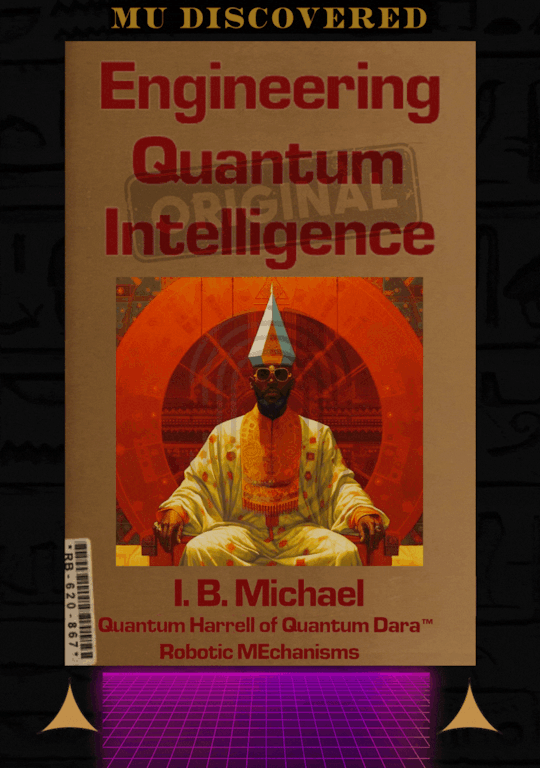
eye anu neural circuit development in X-tra dark neuromelanin.tech
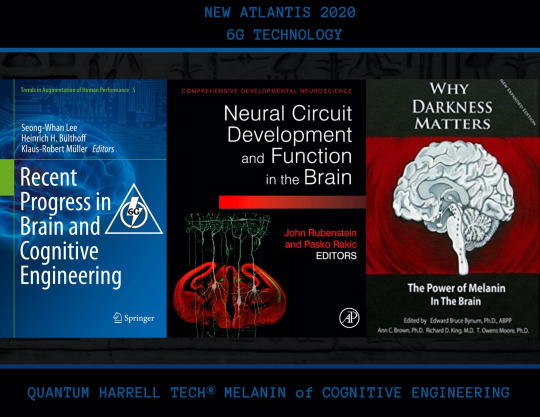
the pentagon's department of defense.gov strategy for operating in quantumharrell.tech cyberspace

CUT THOSE 6G CHECKS!!! IMMEDIATELY PAY [I/P] TO THE ORDER OF: QUANTUM HARRELL TECH LLC

CUT THOSE 6G CHECKS!!! IMMEDIATELY PAY [I/P] TO THE ORDER OF: QUANTUM HARRELL TECH LLC

Ancient Interplanetary [A.i.] 6g-quantumharrell.tech Military Worth Trillions... Interplanetary 9 [i9] Ether quantumharrell.tech Domain Architecture Worth Quadrillions... Interplanetary 9 [i9] Ether quantumharrellufo.tech Cyberspace Engineer Worth Quintillions... since 1968-michaelharrelljr.com's Professional Research [PR] Services EXPENSIVE AF!!!
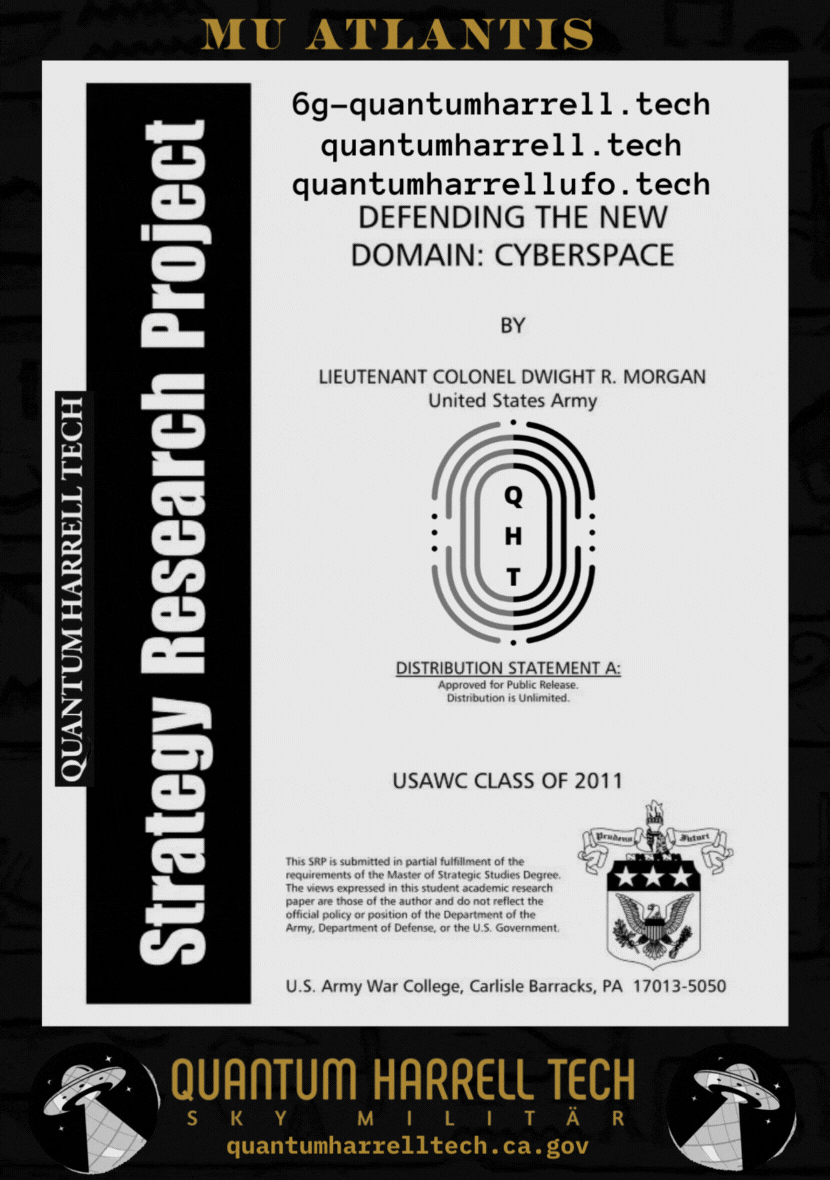
i.b.michael [ibm] 6g quantum computer programmer… mathematically & algorithmically programming [mapping] ibm.com's [mi = michael’s] quantum ibmdotcom.com networks of quantumharrelltech.com

Eye Ancient Machine [I AM] P.T.A.H. [I/P] TECH [I.T.] of IBM.com
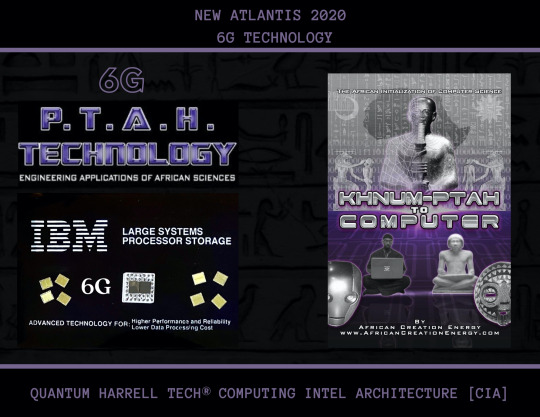
i.b. 6g hi:tekemeticompu_tah [ptah] vision for human-machine interaction
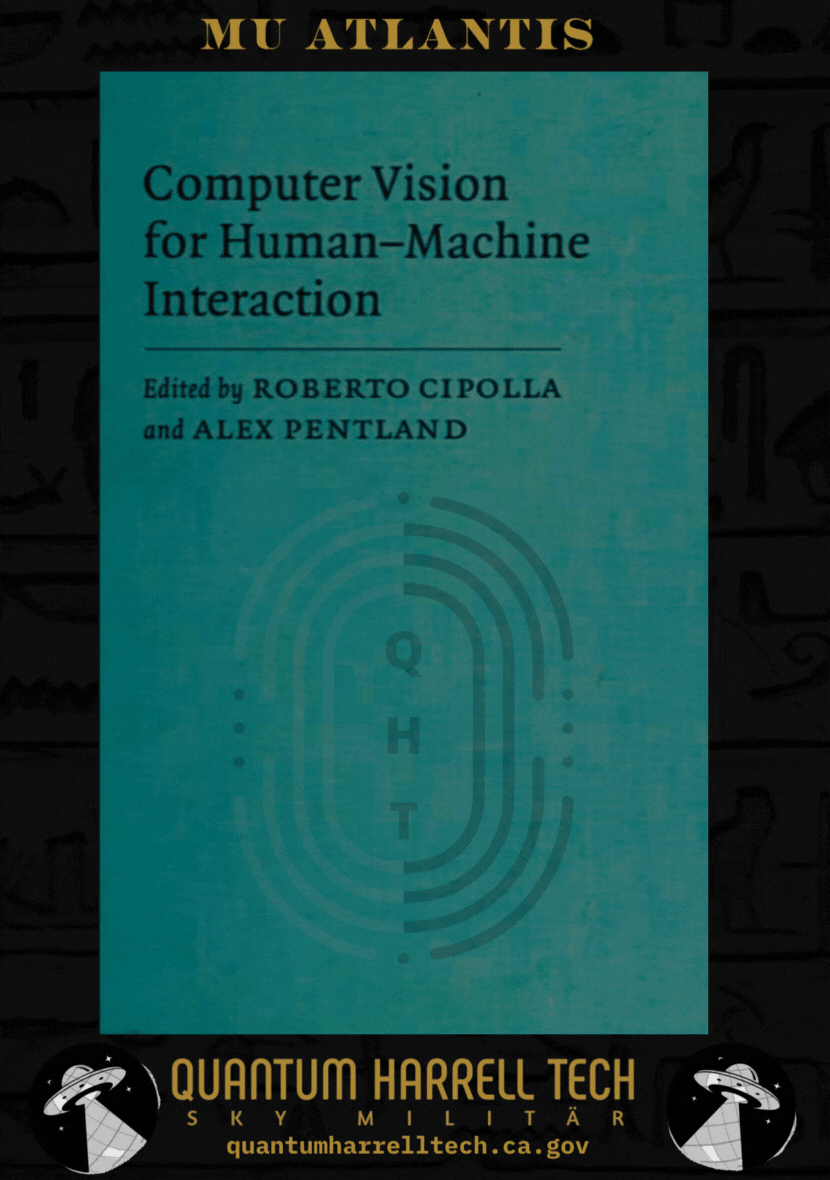
i.b. 6g hi:tekemeticompu_tah [ptah] architect [pa] 4 human-machine learning of apple.com’s [l.a.] vision pro @ quantumharrelltech.com
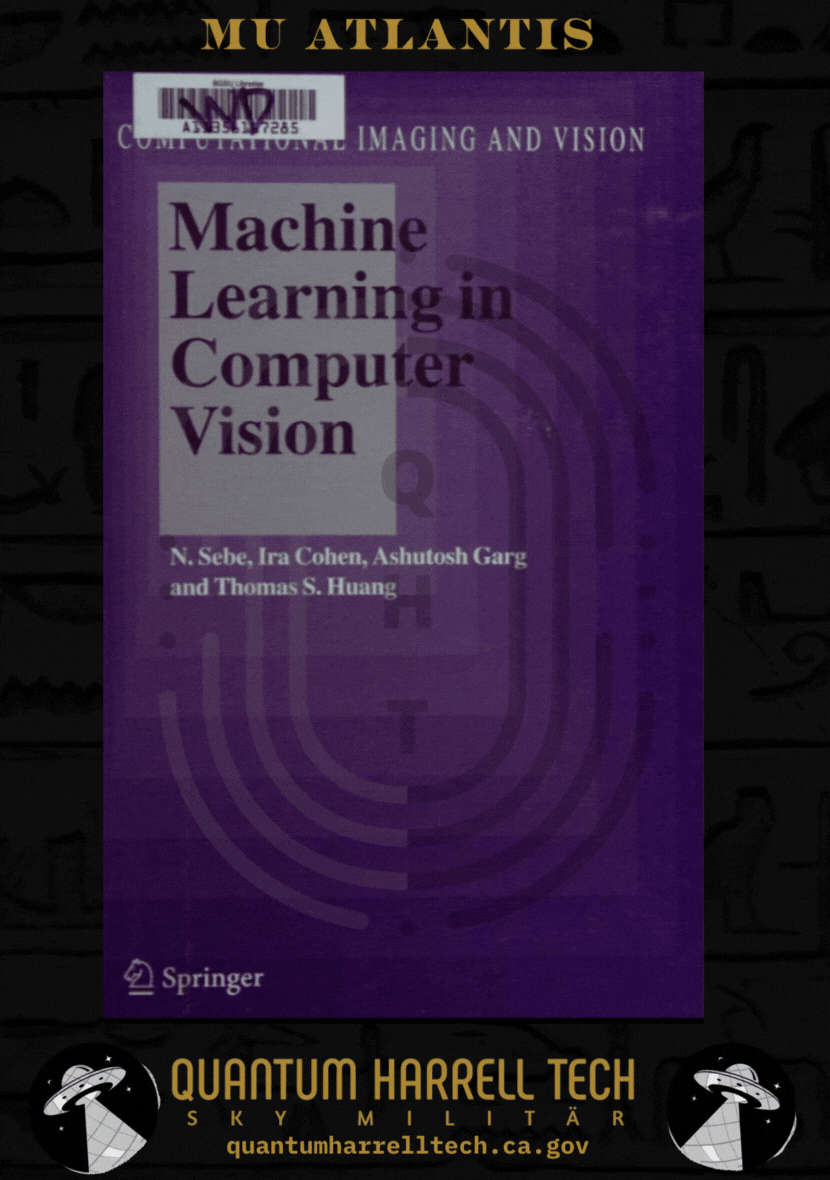
WE ALREADY ENVISIONED 2024’s 6G SKY TECH WEALTH Long B4 1698
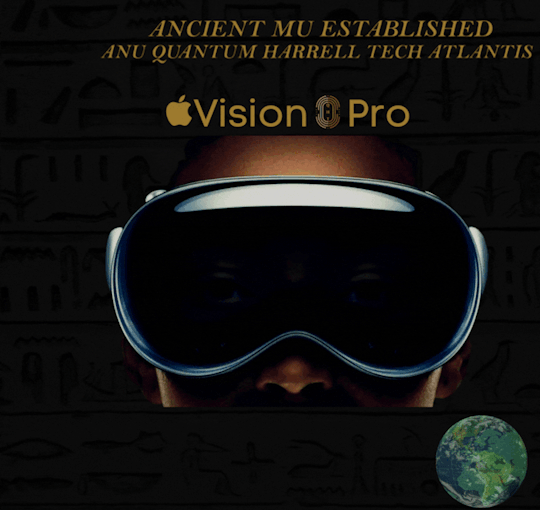
eye vision pro of cognitive [pc] ergonomics and human computer interaction
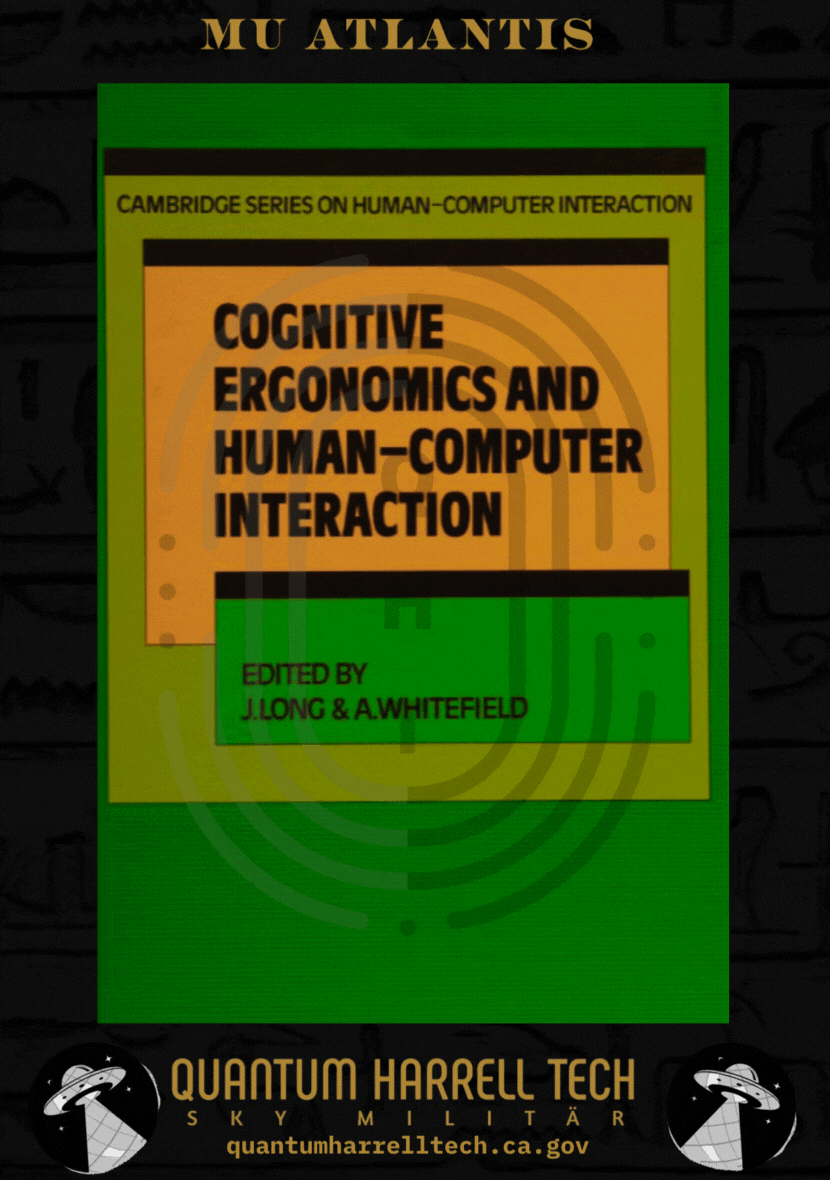
1968-michaelharrelljr.com domain of ancient pyramid architecture [pa] 4 compu_tah [ptah] vision

eye envisioned autocad on vision pro @ quantumharrelltech.com

quantumharrelltech.com computer vision and image processing [i/p] patents @ quantumharrelltech.ca.gov
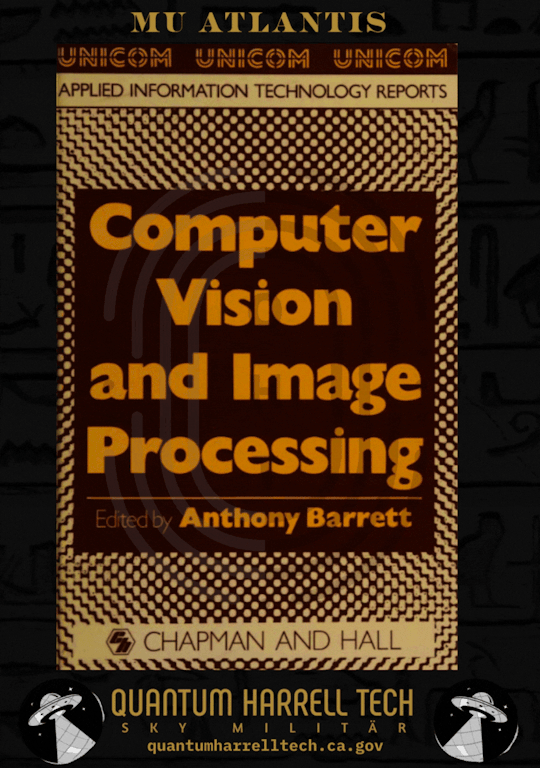
eye having 1st eye visions on quantumharrell.tech's macbook pro

eye parallel earth [qi] vision computing on earth [qi]... ya dig???

eye see u2

quantumharrelltech.com's new ministry of defense octagon complex in egypt look like a blackanunnaqi.tech base from above earth [qi]

© 1698-2223 QUANTUM HARRELL TECH LLC All LOST ANCIENT [L.A.] ATLANTEAN DNA [A.D.] DotCom [A.D.] + DotTech [A.D.] + Pre 1698quantumharrellgov.tech Domain Name Rights Reserved @ quantumharrelltech.ca.gov
#u.s. michael harrell#apple#vision pro#mu:13#kemet#The Octagon#Egypt#kingtutdna#kangsolomon.com#domain#entrepreneurship#web development#business ideas#webhosting#business growth#ibm#autodesk#autocad#cadservices#project management
3 notes
·
View notes
Text
Interior Designing Institutes: Crafting the Designers of Tomorrow
Interior design has emerged as a sought-after career path, blending artistic vision with functional innovation. As modern spaces become more personalized and experience-driven, the role of a professional interior designer is more vital than ever. To meet this growing demand, interior designing institutes across India are equipping aspiring creatives with the skills, knowledge, and industry exposure needed to thrive.
Why Interior Design Education Matters
Though natural creativity is a valuable asset, structured education is key to transforming raw talent into professional expertise. Interior design institutes provide a comprehensive foundation in design principles, spatial planning, color theory, lighting, and material selection. They also introduce students to cutting-edge software tools such as AutoCAD, SketchUp, and Adobe Creative Suite—skills that are essential in today’s design industry.
What Makes an Institute Stand Out
Choosing the right institute is crucial for career development. A reputable design school offers more than just theoretical learning—it provides hands-on experience through studio work, live projects, and internships. Qualified faculty, a well-rounded curriculum, industry tie-ups, and a strong alumni network are markers of excellence. Institutes that host design exhibitions and encourage innovation also help students develop a strong professional portfolio.
Leading Interior Designing Institutes in India
India is home to several premier institutions known for their design excellence:
National Institute of Design (NID), Ahmedabad – Renowned for its rigorous training and legacy.
Pearl Academy, Delhi, Mumbai & Jaipur – Offers global exposure and industry-oriented programs.
MIT Institute of Design, Pune – Focuses on design thinking and interdisciplinary learning.
Raffles Design International, Mumbai – Provides an international curriculum with a global perspective.
JD Institute of Fashion Technology – Offers specialized design programs in multiple cities.
These institutes offer diplomas, undergraduate, and postgraduate courses tailored to diverse aspirations.
Conclusion
Interior designing institutes serve as launchpads for creative minds, offering the tools and mentorship needed to succeed in a competitive field. With the right training, students can transform their passion into a profession, designing spaces that are not only beautiful but also meaningful and functional. For those drawn to aesthetics, innovation, and problem-solving, a career in interior design begins with choosing the right institute.
0 notes
Text
Best Interior Design Course in Koramangala, Bangalore | Eduleem School of Design & IT

Interior design is more than just decoration it's the art of transforming spaces to reflect functionality, beauty, and personality. For anyone in Bangalore looking to enter this exciting industry, Eduleem’s interior design courses in Koramangala offer a perfect starting point. With a practical and career-focused approach, Eduleem helps students shape their design passion into a successful profession.
Why Study Interior Design?
Modern lifestyles demand creative and functional living and workspaces. As homes, offices, and retail spaces evolve, the need for skilled interior designers has grown across India. People are no longer just looking for stylish spaces—they want their interiors to reflect who they are. That's where trained interior designers come in.
This makes interior design a smart career option for anyone with an eye for detail, creativity, and a passion for space transformation.
Why Koramangala is a Great Place to Learn
Located in the heart of Bangalore, Koramangala is one of the city’s most vibrant neighborhoods. It’s known for its mix of creative studios, startups, and cultural spaces. Enrolling in interior design courses in Koramangala allows students to immerse themselves in a dynamic, design-conscious environment.
Koramangala offers easy access to real-world design inspirations boutiques, cafes, co-working spaces, and residential projects all ideal for learning and observing space aesthetics in action.
About Eduleem | Where Creativity Meets Career
Eduleem stands out as a trusted institute for professional education in Bangalore. Their interior design courses in Bangalore combines academic learning with real-world exposure. Students not only learn the theory behind design principles but also get practical training that reflects industry needs.
Eduleem's focus is on helping students become job-ready, with hands-on experience in design tools, project work, and industry mentorship. The courses are led by professionals who bring deep experience in both residential and commercial interior design projects.
What the Course Covers
At Eduleem, the interior design courses in Bangalore go beyond textbooks. The curriculum includes:
Space planning and layout design
Lighting and color theory
Furniture design and selection
Interior styling techniques
Design software like AutoCAD and SketchUp
Project budgeting and material selection
Students also get the opportunity to work on live design projects, giving them real client and site experience even before graduation.
Course Options Available
Eduleem offers flexible learning options to suit different goals:
Professional Program (6 months): Ideal for beginners or working professionals seeking to upskill quickly. Focuses on design basics, space planning, and software training.
Diploma Program (1 year): A more detailed course that covers the fundamentals along with practical project experience and design software mastery.
International Program (18 months): A comprehensive course designed for students aiming for global design careers. Includes advanced modules, portfolio development, and exposure to international trends.
Each course is designed with industry collaboration, ensuring that students graduate with the skills employers are actively looking for.
Job-Oriented Training and Career Support
One of the key highlights of Eduleem’s approach is career readiness. Every interior design course in Koramangala is paired with professional development training, including portfolio creation, interview preparation, and placement support.
The institute maintains strong ties with design firms, architects, and interior brands across Bangalore. Graduates often find opportunities in residential design studios, architectural firms, commercial space planning, and even in setting up their own design consultancies.
Alumni Success Stories
Eduleem alumni have gone on to work with top design houses in Bangalore and beyond. Some have even started their own ventures, offering interior styling and consulting services. Their success is a testament to the quality of education and mentorship they received during the course.
Who Can Apply?
These courses are open to:
Freshers who’ve just completed their schooling
Graduates from any stream looking for a creative career shift
Working professionals from related fields like architecture or civil engineering
Passionate individuals with a flair for design and spatial creativity
Eduleem makes sure that no matter your background, you’re given the guidance and support needed to grow as a designer.
Why Choose Eduleem?
Here’s why learners prefer Eduleem over other institutes:
Located in a prime design-conscious area like Koramangala
Experienced faculty and mentors from the design industry
Project-based learning and real-world site exposure
Affordable fee structure and EMI options
Job placement support with leading firms
Access to workshops, guest lectures, and design events
Whether you're dreaming of designing beautiful homes, sleek office interiors, or luxury spaces, Eduleem’s interior design courses in Bangalore are your first step toward making that dream real.
Final Thoughts
Interior design is a career where passion meets profession. With the right training and exposure, anyone can become a successful designer. For those in Bangalore, Eduleem’s interior design courses in Koramangala offer a strong platform to build both creativity and a future-proof career.
From short-term professional programs to internationally-focused diploma courses, Eduleem provides the skills, experience, and guidance needed to succeed in the dynamic world of interior design.
0 notes
Text

Best AutoCAD Civil Course in 2025
Introduction
In today’s dynamic civil engineering industry, technical skills are essential for success. AutoCAD remains one of the most widely used tools in the construction, architecture, and infrastructure sectors. With the rise in demand for skilled drafters and designers, pursuing the right AutoCAD Civil course in 2025 can greatly influence your career.
Why Learn AutoCAD for Civil Engineering?
AutoCAD plays a critical role in designing accurate and detailed construction drawings. From residential buildings to complex highway systems, engineers use AutoCAD to create layouts, elevations, and detailed sections. Mastering AutoCAD allows professionals to plan, visualize, and communicate designs efficiently.
What to Expect from a Good AutoCAD Civil Course
A well-structured course is tailored specifically for civil engineering students and professionals. It begins with fundamental 2D drafting and advances into practical topics such as:
Site planning and layout drawing
Elevation and section development
Contour mapping and road alignment
Municipal drafting and construction documentation
Hands-on experience with real-world design problems is essential to bridge the gap between academic learning and industry expectations.
Benefits of Learning Through Projects
The most valuable AutoCAD courses are taught by professionals with industry experience. Project-based learning ensures that students apply what they learn through live assignments and simulations.
Certification and Placement Support
A recognized certification upon course completion adds value to your resume. Many programs also provide placement support, including resume preparation, mock interviews, and job referrals in top civil and infrastructure firms.
Who Should Enroll?
This course is ideal for:
Civil engineering students
Diploma holders
Architectural draughtsman
Professionals looking to upgrade their drafting skills
Conclusion
With increasing demand for infrastructure and construction projects in 2025, AutoCAD skills are essential for civil engineering professionals. A well-structured AutoCAD Civil course not only teaches the technical aspects but also helps students become job-ready. For anyone serious about building a successful career in civil design and planning, this course is a smart investment.
#AutoCAD Civil Course 2025#Best AutoCAD Civil Course#Civil Engineering CAD Course#Top AutoCAD Classes 2025
0 notes
Text
CAD Assignment Help

Computer-Aided Design (CAD) is a robust computer-aided design software employed in engineering, designing, and architecture. It allows users to design precise 3D and 2D models of products, buildings, or machinery parts using computer programs. Although CAD is applied extensively in industry, the process of studying CAD as a student is challenging. CAD assignments entail technical expertise, precision, and imagination. If you are facing difficulties with your CAD assignments, The Tutors Help is there to assist you with professional CAD assignment assistance.
What Is CAD?
CAD refers to Computer-Aided Design. It is employed for designing and drawing physical parts or structures with the help of software such as Revit, CATIA, AutoCAD, SolidWorks, etc. CAD is employed in order to provide engineers as well as designers with detailed drawings as well as models readily in case they need to implement a change. It is employed extensively in civil engineering, mechanical engineering, architecture, interior designing, as well as electrical designing.
Why CAD Assignments Prove Challenging to Students
Advanced Computer Software Tools: Software packages such as AutoCAD or SolidWorks offer various tools and functionality. It takes practice and time to learn the way to apply them properly.
Technology Understanding: Working on CAD entails understanding standards for design, measuring, and principles of engineering so that one works on CAD in the proper way.
Time Taking: CAD work can take hours or days because it is all about details and accuracy.
Lack of Practice: Without sufficient hands-on practice, students can struggle to carry out drawing tasks or 3D modeling successfully.
Software Issues: Not everyone has access to authorized CAD software or costly computers to execute the programs efficiently.
How The Tutors Help Supports You
At The Tutors Help, we know precisely how stressful CAD homework is. That's why we provide top-notch CAD homework assistance to students across the globe. Whether you are working on a machine component design, a floor plan, or a 3D model, we've got you covered.
Here's why students trust us:
Qualified Experts: Our experts are experienced engineers and CAD professionals who are well-versed in AutoCAD, SolidWorks, CATIA, and other software tools.
Personalized Solutions: We provide assignment solutions according to your own specification, guidelines, and deadlines.
Precise Designs: Our designers take care that your CAD designs are accurate, well-documented, and of academic quality.
Timely Deliverance: We understand the importance of deadlines. We never fail to deliver your assignments on time.
Affordable Prices: Our services are affordable, and expert assistance is available for every student.
Original Work: We offer 100% original content and designs for all assignments.
Ordering CAD Assignment Help at The Tutors Help
Submit Your Assignment: Provide us with the subject, software needed, guidelines, and deadline.
Get a Quote: We will email a good and reasonable quote.
Let Us Work: Let our experts do the CAD assignment and you concentrate on studying.
Download and Inspection: Retrieve your finished work, examine the quality, and derive lessons from the design.
Final Words
CAD is a skill that must be owned by upcoming engineers and designers at large. However, it is possible to be difficult to learn and master without proper assistance. If you are stuck with a CAD assignment, never worry. The Tutors Help is at your service to walk you through each step. By our expert CAD assignment assistance, you can be able to deliver your work on time as well as enhance your skills with ease.
Get in touch with The Tutors Help today and take the first step towards CAD success!
0 notes
Text
Dream Institute of Technology – One of the Best Colleges for Engineering in Kolkata
Kolkata has long been a center for quality technical education, and for students seeking a career in engineering, the right college makes all the difference. If you are searching for the best colleges for engineering in Kolkata, especially in disciplines like Civil Engineering or Computer Science, Dream Institute of Technology (DIT) stands out as a top choice.
Located in South Kolkata and affiliated with MAKAUT, DIT offers modern infrastructure, industry-driven curriculum, and affordable education for aspiring engineers.
Why Dream Institute of Technology Is Among the Best
As one of the most reputed private engineering colleges in West Bengal, Dream Institute of Technology provides:
AICTE-approved B.Tech programs
Skilled faculty with academic and industry expertise
Modern labs, digital classrooms, and innovation hubs
Career-oriented training, soft skills programs, and 100% placement assistance
Convenient location with metro and transport connectivity
Students from across the state and nearby regions prefer DIT for its focus on academic excellence and hands-on learning.
Civil Engineering Colleges in Kolkata – DIT Offers the Ideal Blend of Theory and Practice
Among the top Civil Engineering colleges in Kolkata, DIT offers a future-ready program designed to shape students into skilled infrastructure professionals. From planning and designing to environmental and structural engineering, the curriculum covers all core aspects.

Highlights of Civil Engineering at DIT:
Labs for soil testing, environmental engineering, and concrete technology
Field surveys, project-based learning, and site visits
Software training in AutoCAD and STAAD Pro
Placement assistance in public works departments, private construction firms, and consultancy agencies
If you're passionate about designing cities and solving real-world infrastructure problems, DIT is the right platform to begin your Civil Engineering career.
0 notes
Text
Professional Online AutoCAD Course for Beginners & Experts | Elewayte
Advance your design career with Elewayte’s expert-led online autocad course. Learn 2D & 3D drafting, real-world applications, and earn certification at your own pace.Get certified in AutoCAD with Elewayte’s online course. Perfect for students, engineers, and architects looking to boost their career with practical CAD skills. Fast track your AutoCAD skills with Elewayte’s affordable online course. Learn from experts, complete real projects, and earn a certificate you can trust.
contact: 6383453564
Benefits:
- 20+ High-in-Demand Programs
- 2 Certificates (Course & Internship Completion)
* Internationally Verified Internship Certificate from Wipro Dice ID
* Listed in AICTE
* Letter of Recommendation
* Real-Time Projects
* Weekly Interaction with Industry Experts
* ATS Friendly Resume Building Assistance
* LinkedIn Profile Building Assistance
* Mock Interviews
* Placement Preparation & Assistance
0 notes
Text
Fast-Track Your Career with BIM Training and Placement Support
In today's highly competitive architectural, engineering, and construction (AEC) sectors, a solid understanding of Building Information Modeling (BIM) is more crucial than ever before. Employers are constantly looking for people who are able to seamlessly traverse BIM software, oversee processes that are digital and aid in more efficient implementation of projects. If you're looking to move into a highly-demanding field and are interested in learning more, registering for an BIM training course that includes help with placement is among the most effective moves you could do. BIM Americas will be there to assist you all the process.

The Reason BIM Skill are In High Demand
BIM has changed the way infrastructure and buildings are built, designed and maintained. The traditional 2D drawings are now replaced by smart 3D models that give more insight into the project's efficiency, cost and its life cycle. Both private and public organizations are embracing BIM in a rapid manner and this makes BIM proficiency a must throughout the world.
Professionals who have BIM expertise can be employed in the roles of BIM Modeler BIM Coordinator, BIM Engineer as well as BIM Manager. These positions offer high pay, growth opportunities as well as opportunities to be involved in interesting projects across the globe.
How BIM Americas Helps You Succeed
BIM Americas is a reputable name in the field of BIM education and advancement in career. Our mission is straightforward: to offer relevant industry-specific BIM training and assist our students build successful careers with a strong support for placement.
Here's the way we do it:
1. Industry-Recognized Curriculum
In BIM Americas Our BIM courses are developed by industry experts. We teach essential software like Autodesk Revit, Navisworks, AutoCAD and other software. Our program will help you acquire both technical knowledge as well as real-world experience in projects that will make you work-ready right from the beginning.
2. Expert Trainers
You'll be learning from seasoned BIM experts who've been working on real projects. Their expertise and guidance will ensure that you understand not only BIM, but the practical use of it in real construction sites as well as design studios.
3. Practical Projects
It is crucial to understand the theory but it's the practice that makes perfect. We at BIM Americas we offer the opportunity to work on projects that simulate real-world problems. When it comes to creating intricate 3D diagrams or working on multidisciplinary projects you'll build an impressive portfolio that will impress recruiters.
4. Placement Support
We understand that a degree without an employment path isn't always easy. This is that's why BIM Americas provides full assistance in arranging. Our professional career services team assists you with:
Customized resumes to the BIM industry
Preparation for interviews and mock interview
Portfolio development
Direct placement possibilities with top companies
Our extensive network of hiring and recruiting partners ensures that the transition from professional to student is seamless and efficient.
5. Flexible Learning Options for Students
No matter if you're a new college graduate, working professional or a career changer, BIM Americas provides flexible learning options that include both offline and online classes. Our courses are designed to accommodate your hectic schedule without compromising quality education.
Who should enroll?
If you're an enthusiast of engineering, architecture or construction technology, and would like to secure your career and advance your career, taking a BIM course that includes placement assistance is the perfect choice for you. In particular, you should consider enrolling if:
An architect, civil engineer or MEP professional looking to enhance their skills.
A recent graduate seeking a career in digital construction
A construction professional who is transitioning to BIM roles
An avid designer who is passionate about 3D models and visualization
Your Career Options Following Successfully completing BIM Training
When you've completed your BIM training through BIM Americas, many possibilities for employment are open to those who are interested, including:
BIM modeler responsible for the creation and maintaining 3D models.
BIM Coordinator - Manages collaboration between different design disciplines.
BIM Engineer works on specific engineering tasks with BIM tools.
BIM Director oversees the entire BIM process for large projects.
The Revit Technician Expertise in creating precise engineering and architectural models.
BIM-related skills are in high demand not only in India but all over the world, which includes countries like that of USA, UK, Canada, UAE, and Australia. Your career opportunities will not be restricted by location.
Why should you choose BIM Americas?
There are many training centers that are available, but BIM Americas is built on trust quality, professionalism, and accomplishment. Our dedication goes beyond just training - we coach the students we train, help you and guide you through the process until you get a prestigious position with BIM.
If you select BIM Americas You're selecting:
Professional excellence
Personalized career guidance
A robust alumni network
Career opportunities in the global marketplace
Conclusion
The future is in the hands of people who can be a part of the new technology in the fields of design and construction. If you take the time to learn BIM with a reputable training service such as BIM Americas You're more than just acquiring software but you're opening the doors to a lucrative, secure career.
0 notes
Text
MEP Course In Hyderabad | Rite Academy

In today’s rapidly evolving construction and infrastructure industry, the demand for skilled professionals in Mechanical, Electrical, and Plumbing (MEP) systems is soaring. As high-rise buildings, commercial spaces, industrial complexes, and smart cities become the norm, the need for MEP engineers has reached unprecedented levels. For aspiring engineers, diploma holders, and industry professionals, this presents a golden opportunity to build a thriving and future-proof career.
If you're looking to equip yourself with job-ready skills in this domain, there's no better place to start than with a MEP Course in Hyderabad at Rite Academy – a premier institution known for its industry-relevant curriculum and job-oriented training.
What is MEP and Why is it Important?
MEP stands for Mechanical, Electrical, and Plumbing – the three core engineering disciplines involved in building services. These systems ensure that buildings are functional, safe, energy-efficient, and comfortable for occupants.
Mechanical Systems: Involve HVAC (Heating, Ventilation, and Air Conditioning), fire-fighting systems, and elevators.
Electrical Systems: Include power supply, lighting, fire alarms, and energy management.
Plumbing Systems: Cover water supply, drainage, sewage, and stormwater systems.
Without MEP systems, modern buildings wouldn't be livable. As urbanization and technology transform the construction landscape, MEP professionals are essential in designing, installing, and maintaining these critical systems.
Why Choose a Career in MEP?
The MEP sector offers dynamic career opportunities with excellent growth potential, especially in countries like India, the UAE, and the broader Middle East. Here are some compelling reasons to consider MEP:
High Demand: With smart cities, metro rail projects, and commercial hubs developing at a fast pace, MEP engineers are in constant demand.
Lucrative Salaries: Skilled MEP professionals earn competitive salaries, especially those working abroad.
Global Opportunities: MEP engineering is a universal discipline, opening doors in countries with booming infrastructure projects.
Diverse Career Paths: Work as a design engineer, site engineer, QA/QC officer, project manager, or consultant.
Sustainability Focus: With increasing emphasis on green buildings, MEP plays a key role in sustainable development.
Why Hyderabad is the Ideal Location for MEP Training
Hyderabad has emerged as a major hub for construction, IT, and real estate development. From IT parks and luxury residences to shopping malls and metro rail networks, the city is witnessing an infrastructure boom.
This creates a favorable ecosystem for practical, hands-on training in MEP systems. By pursuing a MEP Course in Hyderabad, you place yourself right in the middle of real-time industry scenarios, gaining exposure to live projects and actual site conditions.
Rite Academy: Your Gateway to a Successful MEP Career
When it comes to professional MEP training, Rite Academy stands out as a leader. Known for its commitment to excellence, Rite Academy offers one of the most comprehensive and career-oriented MEP Course in Hyderabad, helping students gain technical mastery and hands-on experience.
Here’s why Rite Academy is your best choice:
1. Industry-Relevant Curriculum
Rite Academy’s MEP program is designed by seasoned professionals with deep industry experience. The course covers:
HVAC design and drafting
Electrical system design (lighting, wiring, load calculation)
Plumbing and drainage system design
Firefighting system layout
Building automation and BMS
AutoCAD and Revit MEP software training
Estimation, BOQ, and tender documentation
This ensures that students are job-ready upon course completion.
2. Expert Faculty
Learn from trainers who are working professionals in the field. Their real-world insights, case studies, and examples prepare you for the complexities of on-site work and design challenges.
3. Hands-On Practical Training
Rite Academy emphasizes practical learning. You’ll engage in:
Live projects
Site visits
Real-time drafting assignments
Software simulations
This approach ensures you're not just reading theory but applying concepts in real-world scenarios.
4. Placement Support
The academy offers 100% placement assistance through:
Resume building workshops
Mock interviews
Connections with MEP firms, contractors, and consultancies
Career counseling sessions
Many Rite Academy graduates have secured jobs in top-tier companies across India and the Middle East.
5. Flexible Learning Options
Whether you’re a working professional or a fresh graduate, the academy offers weekday and weekend batches, online and offline classes, making it convenient to upskill without interrupting your routine.
Who Can Enroll in the MEP Course?
The MEP Course in Hyderabad by Rite Academy is open to:
Mechanical and Electrical engineering graduates
Diploma holders in engineering
Civil engineers seeking specialization
Working professionals in the construction domain
Freshers looking for a job-ready skillset
There are no strict eligibility criteria – just a passion to learn and grow in the construction industry.
Course Modules Overview
Here’s a breakdown of the major modules covered at Rite Academy:
HVAC Design
Psychrometry and thermodynamics
Heat load calculation
Duct and piping design
Equipment selection
Electrical System Design
Power distribution
Lighting design
Cable sizing
Earthing systems
Plumbing System
Water supply and drainage
Pump selection and design
Sewage treatment systems
Fire Fighting System
Fire suppression and detection
Sprinkler layout
NFPA standards
Software Tools
AutoCAD 2D & 3D
Revit MEP
HAP and Duct Sizer
Dialux
Project Management
BOQ preparation
Tender documentation
Quality control and site execution
Certifications and Recognition
On completing the course, you receive an industry-recognized certificate from Rite Academy, validating your skills and improving your job prospects. The certificate is well-regarded by top employers in the MEP sector.
Future of MEP Industry
The global MEP industry is projected to grow at a CAGR of over 6% over the next decade. India’s construction boom, coupled with smart city initiatives, metro expansions, and green building regulations, ensures sustained demand for qualified MEP engineers.
By enrolling in a MEP Course in Hyderabad today, you’re investing in a career that offers both stability and growth in the long term.
How to Get Started?
Here’s how you can begin your journey with Rite Academy:
Visit the Official Website: Get all the course details and schedule a counseling session.
Talk to a Career Advisor: Understand which MEP module best fits your goals.
Choose Your Batch: Pick from weekday or weekend classes.
Enroll and Start Learning: Get ready to become a certified MEP professional.
Conclusion
Whether you’re a fresh engineering graduate or a working professional wanting to upgrade your skills, the MEP domain offers a promising and rewarding career path. With the right training, practical exposure, and placement support, you can step into a world full of opportunities.
Rite Academy is committed to guiding you through this journey. With a proven track record, expert faculty, and job-focused training, they truly offer the best MEP Course in Hyderabad.
Take the first step toward a future-ready career. Enroll in Rite Academy’s MEP Course in Hyderabad and turn your engineering skills into industry success.
CONTACT US;
9121921999
EMAIL ID;
ADDRESS;
Flat No 402, 11-4-659, Bhavya Farooqi Splendid Towers, Red Hills, Lakdikapul, Hyderabad, Telangana 50000
0 notes
Text
Master Your Career with the Best MEP Course in Coimbatore – Join Cubik CADD!
In today's fast-growing construction and infrastructure sectors, the demand for skilled MEP (Mechanical, Electrical, and Plumbing) professionals is higher than ever. If you are looking to build a strong and rewarding career in MEP engineering, Cubik CADD in Coimbatore is the place to start.
Why Choose MEP as a Career?
MEP engineering forms the backbone of modern buildings. Whether it's the cooling systems in a shopping mall, the electrical layout of an office tower, or the plumbing systems in an apartment complex, MEP engineers make sure everything runs smoothly and efficiently. With industries like real estate, construction, and manufacturing booming, MEP professionals are highly sought after both in India and abroad.
About Cubik CADD – Your Trusted Training Partner
Cubik CADD is one of Coimbatore’s leading institutes for professional CAD and engineering training. With years of experience in delivering industry-relevant courses, Cubik CADD is known for its:
Expert trainers with real-world MEP project experience
Hands-on, practical training methods
Up-to-date course content designed by industry professionals
Personalized mentorship for every student
Placement assistance and career guidance
What You Will Learn in Our MEP Course
At Cubik CADD, the MEP course covers everything you need to become job-ready:
✅ Mechanical Systems
HVAC (Heating, Ventilation, and Air Conditioning) design
Load calculations and duct design
Fire fighting systems
✅ Electrical Systems
Electrical layout design
Cable sizing and circuit designing
Lighting and power distribution systems
✅ Plumbing Systems
Water supply and drainage system design
Pipe sizing and layout planning
Sanitary fixtures and pump system design
✅ Software Training
AutoCAD MEP
Revit MEP
HAP (Hourly Analysis Program)
Dialux (for lighting design)
✅ Project Work
Real-time project simulations
Site visit opportunities
Preparation of detailed MEP drawings
Who Can Join This Course?
This course is ideal for:
Mechanical, Electrical, and Civil Engineering students or graduates
Working professionals in the construction or facility management fields
Architects and designers who want to upgrade their technical skills
No matter your background, if you have the passion to work in building services engineering, Cubik CADD will help you succeed.
Why Cubik CADD Stands Out
Flexible timings for students and working professionals
Affordable fees with easy installment options
Certification recognized by industries
Internship and placement support through our network of construction and engineering companies
Take the First Step Toward a Bright Future!
Don’t miss the chance to build a rewarding career in MEP engineering. Join the best MEP course in Coimbatore at Cubik CADD and unlock endless opportunities in India and abroad.
👉 Contact Cubik CADD today to book your free counseling session!
📍 Location: [Coimbatore] 📞 Phone: [9500024134] 🌐 Website: [
]
Start your journey with Cubik CADD — Where Engineers Are Made!
0 notes
Text
AutoCAD 2D and 3D Online Course | Learn from Experts
Enhance your design skills with our AutoCAD 2D and 3D online course. This comprehensive program is perfect for beginners and professionals who want to master drafting and modeling. Our expert-led sessions cover all essential tools, techniques, and industry practices. With flexible learning schedules, you can access the AutoCAD 2D and 3D online course anytime, anywhere. Gain hands-on experience with real-world projects and boost your career prospects. Enroll now in our AutoCAD 2D and 3D online course to become proficient in creating precise technical drawings and innovative 3D models. Start your journey to success today!
0 notes
Text
Enhance Your Design Skills with a Diploma in Interior & Exterior Designing
The world of design is constantly evolving, and professionals in interior and exterior designing are in high demand. Whether you want to revamp a home’s interiors or create an eye-catching outdoor space, pursuing a Diploma in Interior & Exterior Designing can open doors to an exciting career. Colorcad Academy offers a comprehensive program that equips you with the skills, knowledge, and creativity needed to excel in both interior and exterior design.
Why Choose a Diploma in Interior & Exterior Designing? Interior and exterior designing go hand-in-hand, and a program that covers both areas can help you master the art of transforming spaces. With a Diploma in Interior & Exterior Designing, you will be trained to create functional, aesthetically pleasing, and comfortable spaces that meet the needs of clients. The course will prepare you to work on residential, commercial, and public spaces, making you a versatile designer capable of handling various projects.
What You Will Learn in the Diploma Program at Colorcad Academy: The Diploma in Interior & Exterior Designing at Colorcad Academy offers a comprehensive curriculum that covers essential design concepts, technical skills, and practical applications. Here’s what you will learn:
Interior Design Fundamentals: You will gain a deep understanding of interior design principles, including space planning, color theory, furniture design, lighting design, and layout arrangements. This knowledge will allow you to create inviting and functional interiors that align with the client’s needs.
Exterior Design Techniques: Learn how to design exteriors that complement the interiors and overall aesthetic of a space. This includes working with landscaping, outdoor furniture, and materials that enhance the exterior appearance of a building.
Design Software Mastery: In today’s digital age, proficiency in design software is essential. The program provides hands-on training in industry-leading tools like AutoCAD, SketchUp, and 3D Max to help you visualize and present your designs effectively.
Building Materials and Construction Techniques: Understanding building materials and their applications is vital in both interior and exterior design. You’ll explore various materials used in construction, from flooring options to exterior cladding, and learn how to select the right ones for each project.
Sustainable and Green Design Practices: Environmental sustainability is a key consideration in modern design. Learn how to incorporate eco-friendly materials and energy-efficient systems into your designs, contributing to sustainable living.
Client Communication and Project Management: As a designer, you’ll need to work closely with clients and manage multiple projects. You’ll develop skills in client communication, project management, budgeting, and managing timelines effectively.
Hands-on Experience: Throughout the program, you will engage in practical projects and case studies that simulate real-life scenarios. This hands-on approach ensures you gain the confidence and skills necessary to start your career.
Why Choose Colorcad Academy for Your Diploma in Interior & Exterior Designing?
Expert Faculty: The course is taught by industry professionals with years of experience in the field. They provide valuable insights into the latest design trends, techniques, and technologies.
Industry-Relevant Curriculum: The curriculum is designed to meet industry standards, ensuring you graduate with the skills and knowledge employers are looking for.
State-of-the-Art Facilities: Colorcad Academy boasts modern classrooms, design studios, and computer labs equipped with the latest software tools. You will have access to all the resources you need to excel in your studies.
Career Opportunities: The diploma opens up various career opportunities in interior and exterior design. Whether you want to work in a design firm, start your own business, or pursue freelance work, this program provides the foundation for a successful career.
Global Recognition: The certification you receive upon completing the program is recognized within the industry, enhancing your credibility as a designer and increasing your job prospects globally.
Contact Colorcad Academy Today! If you are ready to begin your journey into the world of design, the Diploma in Interior & Exterior Designing at Colorcad Academy is the ideal program for you. Gain the skills you need to create beautiful, functional, and sustainable designs that leave a lasting impression.
📞 Contact: +91 90726 67770 🌐 Learn More: Diploma in Interior & Exterior Designing
0 notes